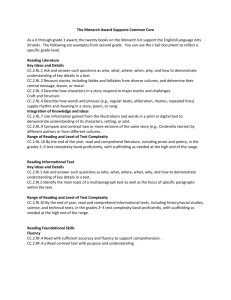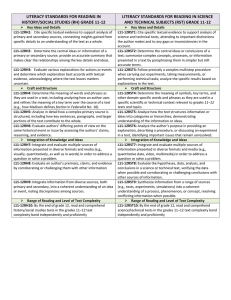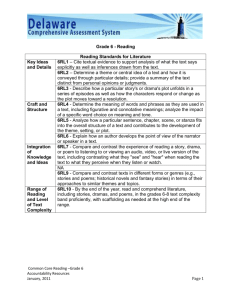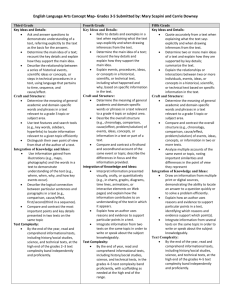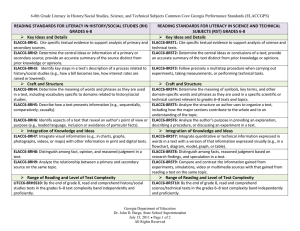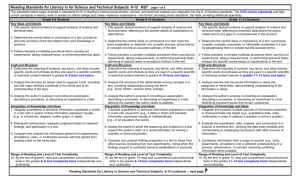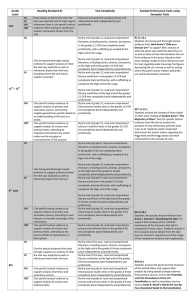World of Physical Science
advertisement
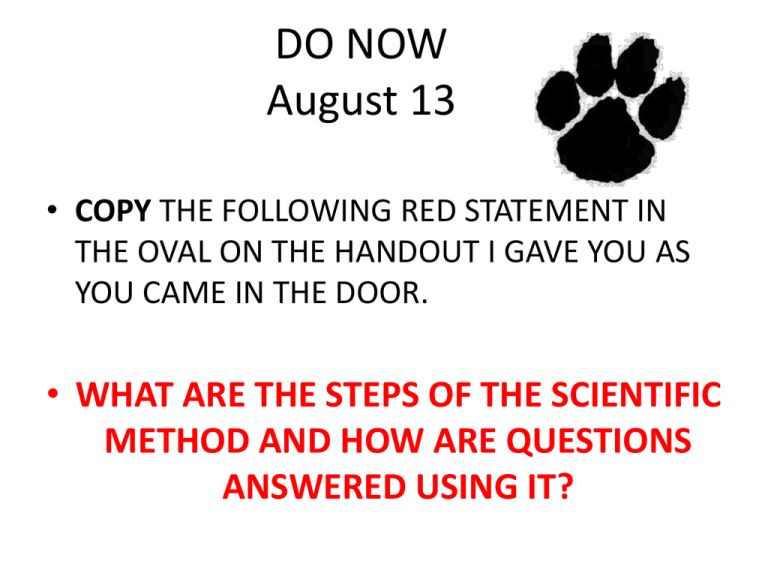
DO NOW August 13 • COPY THE FOLLOWING RED STATEMENT IN THE OVAL ON THE HANDOUT I GAVE YOU AS YOU CAME IN THE DOOR. • WHAT ARE THE STEPS OF THE SCIENTIFIC METHOD AND HOW ARE QUESTIONS ANSWERED USING IT? Notebook Set up • 1. NOTES • 2. DO NOW • 3. VOCABULARY • GRADING NOTEBOOK SECTIONS • 1- NOTES AND HANDOUTS • 2- DO NOW • 3- VOCABULARY NOTEBOOK PAGES • TABLE OF CONTENTS • • • • • 1. COURSE DESCRIPTION 2. STANDARDS 3. SAFETY CONTRACT 4. SCIENTIFIC METHOD MAP 5. SCIENTIFIC METHOD FLIPBOOK NUMBERING/LABELLING PAGES • NOTES SECTION (FIRST SECTION) • EACH PAGE• DATE (TOP) • PAGE NUMBER (TOP CORNER) • LABEL (TITLE) Do Now pages 1. Ongoing 2. Graded weekly 3. ABSENT? You are responsible for copying what you missed from someone 4. Quizzes given based on DO NOWSif you have them, you can use them!! DO NOW Set Up MONDAY 8/13 TUESDAY 8/14 WEDNESDAY 8/15 THURSDAY 8/16 FRIDAY 8/17 WRITE IN WHATEVER YOU ARE INSTRUCTED TO DO THAT DAYVOCAB DEFINITIONS QUESTION AND ANSWER, THOUGHTS… VOCABULARY • Nine weeks complete list • Week 1 list – Lists will be given out almost every week – Quizzes weekly – Definitions and understanding- homework AND classwork – Different assignments each week- first quiz is FRIDAY!!! DO NOW August 14 • Look in your notebook- page 2 and list 6 words that you think are important. • Do this on your first DO NOW page. • SHOW ME YOUR SIGNED SAFETY CONTRACT AS I WALK AROUND **Don’t forget to unpack and have everything out of your book bag** Safety Quiz • Open your notebook to your SAFETY CONTRACT so I can see both your signature and your parent/guardian’s. • TURN YOUR QUIZ OVER WHEN YOU FINISH AND put your head down- that way I know who is still working. Vocabulary and Standards • What words did you choose? • Why did you choose them? • Compare/contrast the words that you came up with to the nine weeks vocab list in your notebook- WHAT DO YOU SEE? DO NOW August 15 Describe what you THINK a STANDARD is. Write them on today’s DO NOW. Standards • Our first Dissection: • We will take apart the standards and see what they are made of! • WHERE DO THE STANDARDS COME FROM? • WHAT DO THEY TELL US? • WHAT DO THEY MEAN? WHAT DO THE # AND LETTERS MEAN IN FRONT OF THEM? MORE ABOUT STANDARDS • CONTENT • CHARACTERISTICS OF SCIENCE/HABITS OF MIND • COMMON CORE STANDARDS • BENCHMARKS AND CRCT COMMON CORE LITERACY STANDARDS Activity Vocabulary Acquisition Reading Standard L6-8RST4: Determine the meaning of symbols, key terms, and other domainspecific words and phrases as they are used in a specific scientific or technical context relevant to grades 6–8 texts and topics. L6-8RST10: By the end of grade 8, read and comprehend science/technical texts in the grades 6–8 text complexity band independently and proficiently. L6-8RST9: Compare and contrast the information gained from experiments, simulations, video or multimedia sources with that gained from reading a text on the same topic. Writing Standard L6-8WHST4: Produce clear and coherent writing in which the development, organization, and style are appropriate to task, purpose, and audience. Labs: Following instructions and writing lab reports L6-8RST3: Follow precisely a multistep procedure when carrying out experiments, taking measurements, or performing technical tasks. L6-8RST10: By the end of grade 8, read and comprehend science/technical texts in the grades 6–8 text complexity band independently and proficiently. L6-8WHST2: Write informative/explanatory texts, including the narration of historical events, scientific procedures/ experiments, or technical processes. a. Introduce a topic clearly, previewing what is to follow; organize ideas, concepts, and information into broader categories as appropriate to achieving purpose; include formatting (e.g., headings), graphics (e.g., charts, tables), and multimedia when useful to aiding comprehension. d. Use precise language and domain-specific vocabulary to inform about or explain the topic. e. Establish and maintain a formal style and objective tone. f. Provide a concluding statement or section that follows from and supports the information or explanation presented. L6-8WHST4: Produce clear and coherent writing in which the development, organization, and style are appropriate to task, purpose, and audience. L6-8WHST5: With some guidance and support from peers and adults, develop and strengthen writing as needed by planning, revising, editing, rewriting, or trying a new approach, focusing on how well purpose and audience have been addressed. L6-8RST1: Cite specific textual Answering evidence to support analysis of Essential and Key science and technical texts. Questions, L6-8RST2: Determine the Summarizers using central ideas or conclusions of notes, text and a text; provide an accurate student learning summary of the text distinct maps from prior knowledge or opinions. L6-8RST7: Integrate quantitative or technical information expressed in words in a text with a version of that information expressed visually (e.g., in a flowchart, diagram, model, graph, or table). L6-8RST10: By the end of grade 8, read and comprehend science/technical texts in the grades 6–8 text complexity band independently and proficiently. L6-8WHST10: Write routinely over extended time frames (time for reflection and revision) and shorter time frames (a single sitting or a day or two) for a range of discipline-specific tasks, purposes, and audiences. L6-8WHST1: Write arguments focused on disciplinespecific content b. Support claim(s) with logical reasoning and relevant, accurate data and evidence that demonstrate an understanding of the topic or text, using credible sources. c. Use words, phrases, and clauses to create cohesion and clarify the relationships among claim(s), counterclaims, reasons, and evidence. d. Establish and maintain a formal style. e. Provide a concluding statement or section that follows from and supports the argument presented. L6-8WHST4: Produce clear and coherent writing in which the development, organization, and style are appropriate to task, purpose, and audience. L6-8WHST5: With some guidance and support from peers and adults, develop and strengthen writing as needed by planning, revising, editing, rewriting, or trying a new approach, focusing on how well purpose and audience have been addressed. Videos and Demonstrations L6-8RST9: Compare and contrast the information gained from experiments, simulations, video or multimedia sources with that gained from reading a text on the same topic. L6-8RST4: Determine the meaning of symbols, key terms, and other domainspecific words and phrases as they are used in a specific scientific or technical context relevant to grades 6–8 texts and topics. L6-8WHST1: Write arguments focused on discipline-specific content. a. Introduce claim(s) about a topic or issue, acknowledge and distinguish the claim(s) from alternate or opposing claims, and organize the reasons and evidence logically. STANDARDS SCAVENGER HUNT • Work with your partner and scavenge through our standards this nine weeks to find answers.
